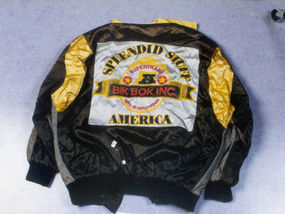 |
|
SCIENTIFIC advances used in the Stephen Lawrence case could
solve the mysteries of Madeleine McCann and Jill Dando.
|
Forensic experts working on the racist murder devised new techniques to
discover microscopic clues that convicted two of the killers.
Now Scotland Yard hopes the same revolutionary approach could help find
the truth behind the
disappearance of three-year-old Madeleine in 2007 and the killing
of BBC Crimewatch presenter Miss Dando in 1999.
The smallest speck of blood ever used in evidence at a British court
nailed racist thug Gary Dobson yesterday.
Invisible to the naked eye, the minute spot was discovered on the collar
of the bomber jacket worn by Dobson during the merciless gang attack on
Stephen.
Two days of painstaking work with a microscope rewarded scientist Ed
Jarman with the breakthrough in April 2008 – 15 years after the murder.
DNA tests proved it matched Stephen’s blood on the red polo top he was
wearing, and the chances of it being anyone else’s was put at a billion
to one. In April 1993 there was no chance such a tiny speck of blood,
just 0.25mm by 0.5mm, could have produced a positive DNA result.
The “Start from Scratch” review into Stephen’s murder was ordered after
the Forensic Science Service admitted major errors, including missed
bloodstains, in the Damilola Taylor case.
|
The smallest speck of blood ever used in evidence at a
British court nailed racist thug Gary Dobson |
The 10-year-old bled to death on a stairwell in Peckham, south London,
in November 2000. Two teenagers were later jailed for manslaughter.
Scientific advances that identified serial sex attacker Robert Napper as
the killer of Rachel Nickell on Wimbledon Common also played a key role.
Clothing seized from Dobson and Norris, as well as other suspects, was
sent to LGC Forensics – the firm which worked on the Taylor and Nickell
cases.
Mr Jarman examined Dobson’s bomber jacket. LGC experts had already found
blood flakes in the paper exhibit bag used to store the jacket. Using a
microscope to increase the image size 40 times, Mr Jarman found the tiny
speck. |



